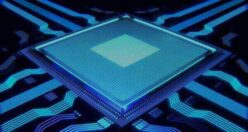The functionality of a microprocessor can be divided into three main parts
1. Microprocessor initiated operation
2. Internal operation
3. Peripheral operation
The microprocessor requires many logic circuits and control signals to accomplish all these tasks. Earlier in the day, it was not possible to make the necessary different circuits on a single chip. So it took a lot of integrated circuits to create a complete unit. Multiple such integrated circuits together to form a control circuit are called MPUs (microprocessing units). At present, with the help of advanced technology, it is possible to build this large and complex circuit on just one chip. This is the CPU or central processing unit.
The microprocessor unit performs the following four functions –
1. Memory Read: Can read data from memory
2. Memory Right: Memory can write anything
3. I /O Read: Receives data through input device
4. I /O Write: Sends processed data to the output device
All of this is part of the communication between the MPU and the peripheral devices, and the MPU has to take a series of steps to accomplish this task. If we think of a memory or any other peripheral, the first thing the microprocessing unit will do is –
Step 1: Identify where the peripheral or memory is (that is, its address).
Step 2: Transfer data via binary number or code.
Step 3: Provide timing or synchronization signal
Also Read – What is a processing device
Three sets of communication lines (BUS) are used to do this. These are (i) Address BUS (ii) Data BUS and (iii) Control BUS
Address BUS: Address Bus is a group of 16 lines. The Address BUS is uni-directional. It helps microprocessors locate peripherals and memory space.
Data BUS: Data BUS is a 6-line Bi-Directional line. That means MPU flows data on both sides of memory and peripheral devices.
Control BUS: The control bus carries the timing signal. Although the word bus is used in the case of control buses, they are not a group of lines like an address bus or a data bus, and they are individual lines.

